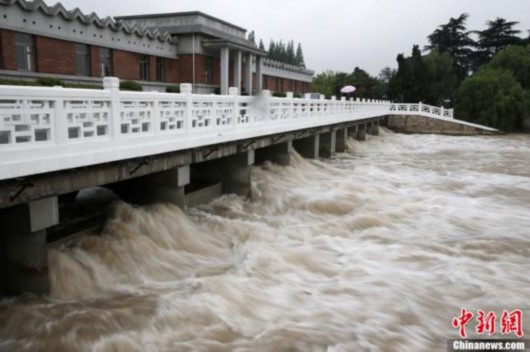China to divert more water from Yangtze River to Shandong
Shandong Province on east China’s seaboard will get 1.09 billion cubic meters of more water from the mighty Yangtze River via the country’s massive water diversion project, authorities announced Thursday.
|
|
|
The diversion work of the eastern route of the South-to-North Water Diversion Project for the 2017-2018 period starts on Oct. 19, 2017, which is scheduled to carry 1.09 billion cubic meters of more water from the mighty Yangtze River to Shandong Province on east China’s seaboard by the end of May 2018. [Photo/CNS] |
The eastern route of the South-to-North Water Diversion Project will carry water from the Yangtze River through canals and pump stations to Shandong. The diversion work for the 2017-2018 period started Thursday, and is scheduled to be completed by May 2018, according to the South-to-North Water Diversion Office under the State Council.
Shandong has already received a total of 2 billion cubic meters of water through the project.
The project, one of the country’s largest infrastructure schemes, is designed to take water from the humid south to the arid north. Water flows northward via three routes of the massive water diversion project — eastern, central, and western.
Apart from Shandong, the project has transferred 10 billion cubic meters of water to areas including Beijing and Tianjin, benefiting some 53.1 million people, earlier data from the office showed.
